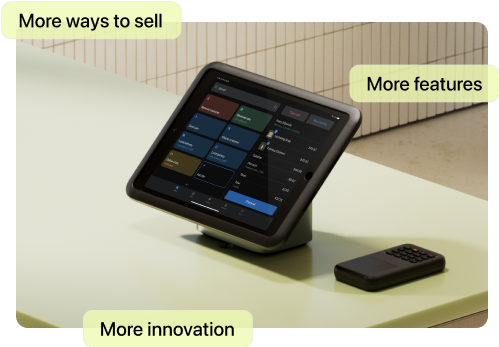For the past 70 years, American consumers have been steadily abandoning cash. In fact, only 12% of in-person purchases involve cash, while ecommerce purchases are entirely cashless. Instead of physically managing bills and coins, payment processors digitally move money between customers and merchants.
Below, learn how payment processors work, review the top payment processing solutions, and read which factors to consider when choosing a payment processing service.
What is a payment processor?
Payment processors facilitate the transfer of funds between bank accounts. They complete business transactions, including credit and debit card payments, automated clearing house or ACH bank transfers, and digital wallet sales.
Payment processing companies orchestrate communication between all parties in a transaction: the payment gateway company, the customer’s credit card company or bank, and the merchant’s bank. Ultimately, payment processors ensure your customers’ payments end up in your merchant account.
How does a payment processor work?
- Payment processor receives payment information
- Payment processor seeks authorization
- Payment is completed
- The money moves
Here’s how payment processors move money to facilitate transactions:
1. Payment processor receives payment information
After a customer enters their card information in a payment gateway like an online checkout page or point-of-sale (POS) terminal, the payment gateway encrypts the data and securely sends it to the payment processor.
2. Payment processor seeks authorization
The payment processor sends the customer’s payment information to the issuing bank or credit card company for authorization.
3. Payment is completed
The card network or bank informs the payment processor whether or not the customer’s payment is authorized. If the bank approves the payment, the merchant accepts it and completes the transaction. If the bank or card network declines it, the merchant might prompt the customer to try an alternate payment method.
4. The money moves
Once the transaction is authorized and completed, the payment processor tells the issuing bank to send the funds to the merchant’s financial institution, also known as the acquiring bank.
How to choose a payment processor
- Consider fixed fees vs. interchange plus rates
- Think about where you sell
- Account for chargebacks
- Consider currency conversion
- Factor in payment gateway fees
You'll need a payment processor if you accept credit card or any other non-cash payments. To choose the right one for your small business, you’ll want to do the following:
Consider fixed fees vs. interchange plus rates
While all payment processing companies charge for transactions, fee structures vary. Some payment processing services charge fixed fees, meaning the cost per transaction is consistent across all payments of a given type (i.e., you’ll pay one fee for all credit card purchases, for example). Payment processors that charge fixed fees tend to forgo subscription fees, a bonus for new business owners with limited capital.
Other companies charge interchange plus fees. Also known as cost-plus pricing, interchange plus fees represent the price a credit card company charges to run a transaction plus an additional per-transaction fee. Interchange plus fees vary by credit card company and can fluctuate throughout the year.
Since the total of these two fees is typically lower than the equivalent fixed transaction fees, payment processing companies with this pricing model usually charge monthly subscription fees, too. This model is attractive if your business processes a high enough sales volume that the per-transaction savings outweigh subscription costs.
Think about where you sell
Do you conduct your business online, or do most of your sales happen at a physical store? Payment processing transaction fees often vary by these locations. Transactions without physical cards present a higher fraud risk, which is why they’re more expensive.
Payment type also affects fees. A payment processor may charge different amounts to process credit card payments vs Apple Pay transactions, for instance. Be sure to secure a competitive rate for your most anticipated transaction type.
If you accept in-person payments, choose a payment processor with an integrated payment gateway POS system (or one that integrates with your existing POS system).
If you take your business on the go or participate in pop-ups or pay-on-delivery services, choose a payment processor with a mobile app that lets customers pay by tapping a smartphone card reader attachment.
If you primarily sell online, consider a payment processing option with integrated online checkout, like Shopify Payments.
Account for chargebacks
Your payment processor will impose fees for chargebacks and disputes, so ensure you account for them. Chargebacks—when customers dispute payments on their cards—are a common enough fraud scheme that it’s worth setting aside budget for them.
Consider currency conversion
Currency conversion rates vary by payment processor. Seek preferential rates if you plan to conduct significant cross-border business.
Factor in payment gateway fees
Some companies act as both payment processors and payment gateways. Others link to separate payment gateways. In this case, secondary payment gateways also charge transaction fees, which you should consider when choosing your payment processor.
9 top payment processing companies
There are lots of payment processing companies that can serve your business. Here are nine of the best:
1. Shopify Payments

You have automatic access to Shopify Payments if you have a Shopify storefront. The easy-to-set-up payment processor runs on a fixed-rate pricing model that is the same across card types.
Plus, if you have a retail location, you can use Shopify’s physical POS system, which integrates your payment gateway and payment processing system.
Pricing: Transaction fees vary depending on your Shopify plan. Solo entrepreneurs pay 2.9% plus 30¢ per transaction for online sales and 2.6% plus 10¢ for in-person transactions. Meanwhile, small businesses pay 2.7% plus 30¢ for online transactions and 2.5% plus 10¢ for in-person sales.
2. Payment Depot

Payment Depot offers lower transaction fees than the competition but charges monthly recurring payments, making it suitable for businesses with high sales volumes. If you plan to sell at a physical location, note that Payment Depot doesn’t offer the comprehensive payment gateway POS options that some other processors do.
Pricing: Subscription fees start at $39/month. In-person transactions cost the wholesale interchange rate (1.51% to 2.5%) plus 10¢ per use. Online transactions cost the wholesale interchange rate plus 10¢.
3. Square

You might recognize Square’s signature white card terminal. It’s a popular payment processor for small businesses with physical storefronts, offering several hardware options for POS payment gateways. Square doesn’t charge startup or subscription fees for its payment processing services.
Pricing: 2.6% plus a 10¢ transaction fee for in-person purchases; 2.9% plus 30¢ for online transactions.
4. Stripe

With competitive fixed fees for online purchases, Stripe is a popular choice among ecommerce merchants. Stripe is customizable, and specifically designed so web developers can adjust the product’s API to their business’s needs.
Pricing: 2.9% plus 30¢ for all online and in-person domestic card transactions.
5. PayPal

PayPal can process payments in various formats, including QR codes and invoices, making it ideal for service-based businesses and pop-up attendees. Some customers feel comfortable with PayPal because it’s a well-known and trusted brand. It’s easy to integrate PayPal into your Shopify checkout. Although PayPal doesn’t charge a monthly subscription, its transaction fees are relatively high, and it might be less appealing for high-volume businesses.
Pricing: 2.99% plus 49¢ for domestic credit and debit card payments.
6. Payline

Payline is a good choice for processing credit card payments in high-risk industries with higher-than-average dispute rates, like health supplements and travel. (Some payment processing services don’t accept payments in these industries.)
Payline charges relatively low, separate monthly fees for online credit card payments and in-person transactions. Payline Data integrates with Quickbooks, which can streamline your accounting process if you use the popular accounting software.
Pricing: In-person businesses pay $10/month plus a per-transaction fee of the interchange rate plus 0.4% plus 10¢; online businesses pay $20/month plus a per-transaction fee of the interchange rate plus 0.75% plus 20¢.
7. Finix

Finix is another payment processor that runs on a subscription-rate-plus-low-transaction-fees model. Monthly dues start at $250, so you’ll need high sales volume to justify the cost. With the higher subscription fee comes 24/7 customer support, online checkout setup, customizable payment solutions, and reporting and analytics.
Pricing: $250 and up in monthly fees. For in-person transactions, you’ll pay the interchange rate plus 8¢. For online payments, you’ll pay the interchange rate plus 15¢.
8. Stax

Stax—which also runs Payment Depot—carries a monthly fee of $99 and higher. With competitive transaction fees, it can be a solid choice for merchants with high sales volume, as long as transaction savings cover the monthly subscription cost.
Pricing: $99 and up in monthly fees, depending on sales volume. You’ll pay the interchange rate plus 8¢ for in-person transactions and the interchange rate plus 15¢ for online payments.
9. Helcim

Helcim offers volume discounts, meaning that as your sales increase, your fees decrease. This makes it a great option for fast-growing businesses. Helcim builds its fees atop the interchange rate, but unlike other payment processors with this fee structure, Helcim does not levy a monthly charge.
Pricing: For monthly sales less than $50,000 (the lowest tier), you’ll pay the interchange rate plus 0.4% plus 8¢ for in-person sales and the interchange rate plus 0.5% plus 25¢ for online payments. Rates decrease as your sales volume increases.
Read more
- 11 Best Domain Name Registrar Picks for 2024
- 7 Types of Ecommerce Tools You Need for a Successful Online Business
- How To Make Your First Ecommerce Sale—Fast (Tutorial 2024)
- TikTok Success Stories- 9 Small Businesses That Went Viral
- Retail vs. Ecommerce- How Are They Different?
- Mobile Payment- Definition, Types, Advantages
- How To Make Your First 10 Sales
- How to Turn Around a Struggling Business- Tips and Real-Life Examples
- Build on Solid Foundation- The 11 Best Website Builders for Small Businesses
- The 4 Key Components of Ecommerce Merchandising
Payment processors FAQ
What do payment processors do?
A payment processor is a company that facilitates money transfers between two parties, such as a consumer and a merchant. A payment processor acts as an intermediary, securely moving funds from the consumer’s bank to the merchant’s and ensuring payments are received.
What are examples of a payment processor?
Examples of payment processors include:
- Shopify Payments
- Payment Depot
- Square
- Stripe
- PayPal
- Payline
- Finix
- Stax
- Helcim
Is PayPal considered a payment processor?
Yes, PayPal is considered a payment processor. PayPal is an online payment service that allows users to send and receive payments for goods and services. Both businesses and individuals use PayPal to process payments for online purchases, bill payments, and money transfers.





